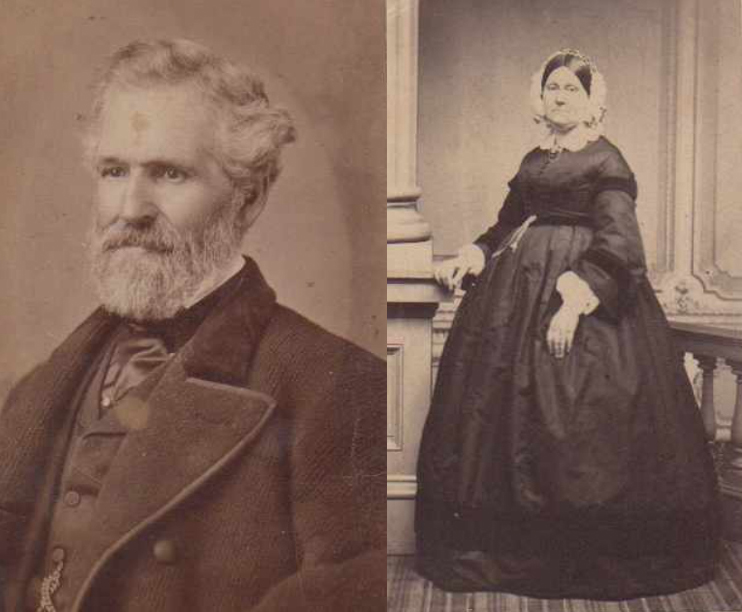
Dorchester Illustration 2583 Nathaniel Tucker and Mary Fenno Tucker
The following text is from the Dorchester Historical Society’s house history project.
Born in Canton (later Stoughton) in 1805, Nathaniel Tucker was the eldest of James and Betsey (Withington) Tucker’s eight children. Little is known of his early life, as few records exist to document the years prior to his appearance in Dorchester records in 1850. The one record we do have is of his marriage to Mary Fenno in 1829. Nathaniel and Mary Tucker had two daughters: Mary Eliza, who married Timothy Munroe Rhodes and Frances Louisa, who married Allen Darrow Smith.
Nathaniel was a leather merchant, with offices on Pearl Street in Boston. He dealt in boots and shoes on a wholesale basis, and the company was known as Nathaniel Tucker & Co. By the 1870s, Nathaniel had retired. The company had been taken over Munroe Rhodes, and advertised under the name of Rhodes, Paige & Co., Successors to Nathaniel Tucker & Co.
Tucker’s business appears to have been very profitable. He traveled to Europe on business in 1868 and in December of 1872, he applied for a passport, planning to travel to Europe with his wife and daughter. According to his passport application, he intended to be away for a period of two years. In preparation for this trip, T. Munroe Rhodes, then deeply involved in real estate, advertised the house at 19 Sumner Street to let, providing rare detail about the house and other buildings on the estate. The house is listed as having “all the modern improvements.” At that time, “modern improvements” might include central heating with a coal-fired furnace and hot air through natural convection and gas lights. Through this advertisement, we know that the property contained a stable, with a bowling alley and billiard room connected. The large garden, “with fruit and vegetables in abundance” is a reminder that Dorchester still embodied its agrarian origins. Many wealthy Dorchester residents cultivated new varieties of fruits and vegetables as an avocation, some of which can be still be found today.
The photo of Mary Tucker must have been taken in the 1860s, when her husband’s career would have been at its peak. Mary would have been in her late fifties. Her dress, with the hoop skirt popular in that era, appears to be silk. The sleeves are banded with velvet, and there is lace at the collar and wrists. A lace handkerchief is tucked in at her waist and her hair, with its stylish mid-part, is covered with a lace cap, as would be fitting for a married woman of her age. She is photographed against a formal backdrop, likely staged by the photographer. This portrait, together with the fact that there are multiple portraits of Mary, indicates the important financial and social position of the Tucker family.
When the family returned from Europe, they moved from 19 Sumner Street to Train Street, near Neponset Avenue, likely to live with their daughter, Mary Eliza, and her husband, T. Munroe Rhodes. Tragically, on November 6, 1875, while she was riding in her carriage with her grandchild, for some reason her horse became unmanageable. Perhaps it was frightened; whatever the reason, Mary was thrown from the carriage and killed instantly. The Boston Post reported on the accidenton November 8th. Nathaniel Tucker continued to live on Train Street until his death in 1886. Notice of his death appeared in The Boston Globe on June 25, 1886.
